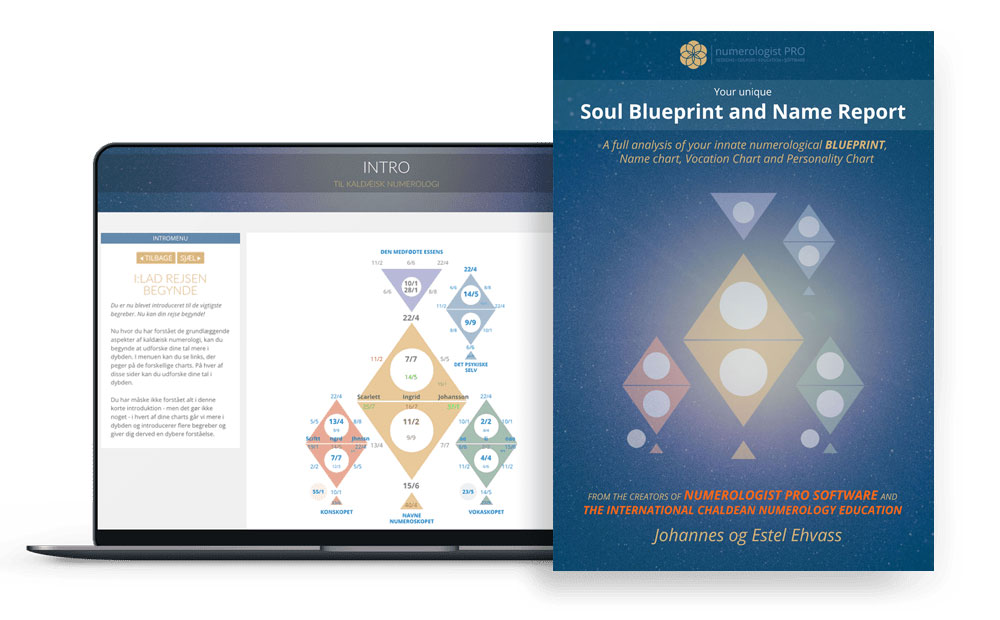Early Mesopotamian Astrology: The Dawn of Celestial Divination

Johannes Ehvass
Welcome, dear reader! Together, we embark on a captivating journey into astrology, a timeless art and science that has accompanied humanity since its earliest days. Each astrological discovery not only mirrors the era and culture it emerged from but also feels like a celestial gift, as if the universe is directly speaking to us. Through these articles, I share with you the profound journey of how astrology has grown and evolved alongside us. Let's explore this cosmic connection that has, for millennia, enriched our understanding of ourselves and the universe around us.
Early Mesopotamian Astrology: The Dawn of Celestial Divination

The story of astrology, a practice that intertwines celestial observations with terrestrial concerns, finds its earliest roots in the ancient lands of Mesopotamia. The cradle of civilization, as it’s often called, was also the birthplace of humanity’s first sophisticated attempts to find meaning in the movement of stars and planets. These primordial practices, developed in ancient Sumer and Akkad, were primarily omen-based and set the stage for more elaborate astrological systems in subsequent ages.
The Mesopotamian Landscape and Cosmic Curiosity
Mesopotamia, the land between the Tigris and Euphrates rivers, was home to some of history’s most advanced early cultures. The Sumerians and Akkadians, in particular, were known not just for their ziggurats and cuneiform script but also their profound interest in the cosmos. Clear skies and flat landscapes provided the perfect canvases for these ancient people to gaze upwards and contemplate the stars.
Proto-Astrological Practices: Omen Interpretation
Before there were horoscopes or systematic zodiac signs, the Mesopotamians engaged in omen-based astrology. They believed that the gods communicated their intentions and feelings through the natural world, especially the heavens. Lunar eclipses, planetary conjunctions, and other celestial phenomena were viewed as portents of things to come.
The Sumerians and Akkadians developed intricate systems to interpret these omens. These were based on empirical observations made over generations. For example, if a particular celestial event was followed by a drought or a military defeat, that event would be considered an ill omen for similar occurrences in the future.
Earliest Celestial Records
The systematic recording of celestial movements is a hallmark of early Mesopotamian cultures. Astronomical diaries, inscribed on clay tablets using cuneiform script, provide a wealth of information about how these ancient civilizations tracked the stars and planets. These diaries detailed not just the movements of celestial bodies, but also events on Earth, creating a dual record that allowed for the correlation of heavenly phenomena with terrestrial happenings.
The Moon: A Prime Celestial Focus
Of all the celestial bodies, the Moon held a special place in early Mesopotamian astrology. Its phases, eclipses, and its prominent position in the night sky made it a primary focus for omen interpretation. A lunar eclipse, where Earth’s shadow falls upon the Moon, was especially significant. Such events were often associated with the displeasure of the gods and were seen as omens of potential disaster or significant change.
Planets and Their Significance
While the Moon was a dominant force in early Mesopotamian celestial observations, the planets, too, played a crucial role. Each major planet was associated with a specific deity, further cementing the connection between the heavens and divine intent. For instance, Jupiter was linked to Marduk, the chief god of the Babylonian pantheon. Venus, visible just before dawn or after sunset, was associated with the goddess Inanna (later known as Ishtar). The movements and positions of these planets relative to specific stars and constellations were meticulously recorded and interpreted for omens.
Astrological Priests and Temples
The task of observing, recording, and interpreting celestial omens fell to a specialized class of priests. These priest-astronomers operated from temples that were not just religious centers but also served as observatories. Elevated ziggurats provided unobstructed views of the sky, making them ideal for celestial observations. These priests were held in high regard, given that they acted as intermediaries between the gods and the people, deciphering divine will from the patterns in the sky.
Conclusion
The early astrological practices of ancient Sumer and Akkad laid the foundation for subsequent developments in the field. By observing and interpreting celestial omens, these ancient cultures began a journey to understand humanity’s place within the cosmos. This quest, rooted in the flat plains of Mesopotamia, would eventually spread, evolve, and shape astrological thought for millennia to come. As we delve deeper into this journey, the next stop is the “Enuma Anu Enlil,” a seminal series of cuneiform tablets that offer a more detailed glimpse into Babylonian celestial omen interpretation.

Johannes & Estel: Renowned authorities in Numerology, Astrology, and the esoteric arts. As the founders of Scandinavia's premier Numerology school, we're delighted to share our insights through this curated series on astrology. Dive in and discover the stars.
The Worlds Most Advanced Numerology Report

Your birthdate reveals your unique life purpose, potentials, talents, weaknesses, and karma in this life.
Your names show what you attract into your life regarding your career, relationships, happiness, money, and success.
GET THE REPORT HERE
Introduction to Astrology
The history of Astrology
Moving beyond deterministic astrology
Foundation of Astrology: Planets, Signs and Houses
Astrology and the Holographic Universe
The Holographic Universe
The Human Psyche as a Mirror to The Solar System
The Human Body as a Mirror to The Star Signs
Astrology Background
Egyptian Astrology
Mayan Astrology
Chinese Astrology
Indian Astrology - Jyotish
Celtic Astrology
Tibetan Astrology
Mesopotamian Astrology
Early Mesopotamian Astrology: The Dawn of Celestial Divination
Enuma Anu Enlil: The Epicenter of Babylonian Celestial Omen Interpretation
Babylonian and Chaldean Astrology
Babylonian and Chaldean Astrology
Chaldean influence and evolution
Chaldean Wisdom: Safeguarding and Transmitting Astrological Knowledge
Hellenistic Astrology
Hellenistic Astrology background
Claudius Ptolemy and Tetrabiblos
Vettius Valens
Dorotheus of Sidon
Persian Astrology
Persian Astrology background
Sassanian Astrology
Late Antiquity and The Transition Period
Late Antiquity and The Transition Period
Hellenistic to Islamic Transition: The Torchbearers of Astrological Wisdom
Islamic Golden Age
Arabian Astrology Background
Arabian Astrology Contributions
Medieval Astrology
Introduction: The Medieval Cosmos
Monastic Preservers: Astrological Knowledge in the Dark Ages
Astrology in Medieval Medicine
Kings, Queens, and Constellations: Astrology in the Medieval Court
The Church and the Stars: A Contentious Relationship
Universities and Scholastic Pursuits: Academic Astrology
Astronomy & Astrology: Tools of the Trade
Medieval Astrological Houses and the Synthesis of Traditions
Transition to the Renaissance: Humanism and the Celestial Arts
Reflections: Medieval Astrology's Echoes in Modern Practice
Astrological Art of the Middle Ages
Famous Medieval Astrologers
Medieval Astrological Texts
Renaissance Astrology
Renaissance Humanism and Astrology
Scientific Advancements and Astrology
The Social Fabric: Astrology in Everyday Renaissance Life
Court Astrologers of the Renaissance
Controversies and Conflicts: Astrology Under Scrutiny
Renaissance Texts and Authors: Continuation of a Tradition
Astrology and Art: Celestial Imagery in the Renaissance
Renaissance Astrological Practices: Evolutions and Innovations
End of the Renaissance: The Gradual Decline of Astrological Influence
Renaissance Astrology's Echo in the Modern World
Enlightenment Astrology
Introduction: The Enlightenment and Astrology
Challenging the Stars: Astrology's Critics during the Enlightenment
Astrology and the New World
Astrology in the 19th Century
The Dawn of Psychological Astrology
Astrology in the 20th Century: A Modern Renaissance
Astrological Associations and Schools
Modern Controversies and Astrology
Astrology and Popular Culture
Astrology and Technology
Current Trends and Future Directions in Astrology
Conclusion: Reflecting on Astrology's Evolution
The Planet Significances
The Sun in Astrology
The Moon in Astrology
Mercury in Astrology
Venus in Astrology
Mars in Astrology
Jupiter in Astrology
Saturn in Astrology
Uranus in Astrology
Neptune in Astrology
Pluto in Astrology
Chiron in Astrology
Black Moon Lilith in Astrology
Pars Fortuna in Astrology
Ceres in Astrology
Houses in Astrology
Introduction to Astrological Houses
The Angular Houses
The Succedent Houses
The Cadent Houses
The 1st House
The 2nd House
The 3rd House
The 4th House
The 5th House
The 6th House
The 7th House
The 8th House
The 9th House
The 10th House
The 11th House
The 12th House
Interaction Between Houses
Derived Houses, House Rulers, and Interceptions
Conclusion: Synthesizing House Knowledge
All Materials © 2023 & 2024 Numerologist PRO
Terms of Service: Information provided by Numerologist PRO and/or from this web site is not intended as advice (medical, psychological, financial or other), nor is it intended to replace your work with a qualified professional (medical or otherwise). You should maintain your relationship with your providers and consider the services of this site as informational only. Any information, stories, examples, or testimonials presented on this website do not constitute a warranty, guarantee, or prediction regarding the outcome of an individual. This web site is a sharing of knowledge and information of numerology/energy work based on the experiences of Numerologist PRO. You are encouraged to make your own decisions based on your own research and inner guidance. By booking and receiving services, you agree to fully release and hold harmless Numerologist PRO and all it's affiliated numerologists from and against any liability or claim that may arise out of or in connection with their service(s).
Numerologist PRO © 2021

CONTACT
numerologist@numerologistpro.com
LIKE US, and get free numerology tools, info about your personal numbers, best business dates of the year - and more!
YOUR FREE NUMEROSCOPE CHART
Enter your name and email below and get access to our free online numerology chart tool.